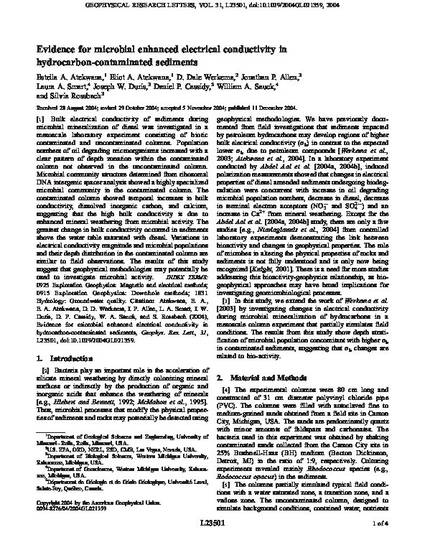
Bulk electrical conductivity of sediments during microbial mineralization of diesel was investigated in a mesoscale laboratory experiment consisting of biotic contaminated and uncontaminated columns. Population numbers of oil degrading microorganisms increased with a clear pattern of depth zonation within the contaminated column not observed in the uncontaminated column. Microbial community structure determined from ribosomal DNA intergenic spacer analysis showed a highly specialized microbial community in the contaminated column. The contaminated column showed temporal increases in bulk conductivity, dissolved inorganic carbon, and calcium, suggesting that the high bulk conductivity is due to enhanced mineral weathering from microbial activity. The greatest change in bulk conductivity occurred in sediments above the water table saturated with diesel. Variations in electrical conductivity magnitude and microbial populations and their depth distribution in the contaminated column are similar to field observations. The results of this study suggest that geophysical methodologies may potentially be used to investigate microbial activity.
- Downhole Method,
- Magnetic And Electrical Methods,
- Groundwater Quality,
- Calcium,
- DNA,
- Electric Conductivity,
- Hydrocarbons,
- Microorganisms,
- Weathering,
- Electrical Conductivity,
- Intergenic Spacer Analysis,
- Microbial Activity,
- Microbial Mineralizations,
- Sediments,
- Borehole Geophysics,
- Diesel,
- Groundwater Pollution,
- Geophysics -- United States,
- Groundwater -- Quality,
- Hydrology -- United States
Available at: http://works.bepress.com/estella-atekwana/27/